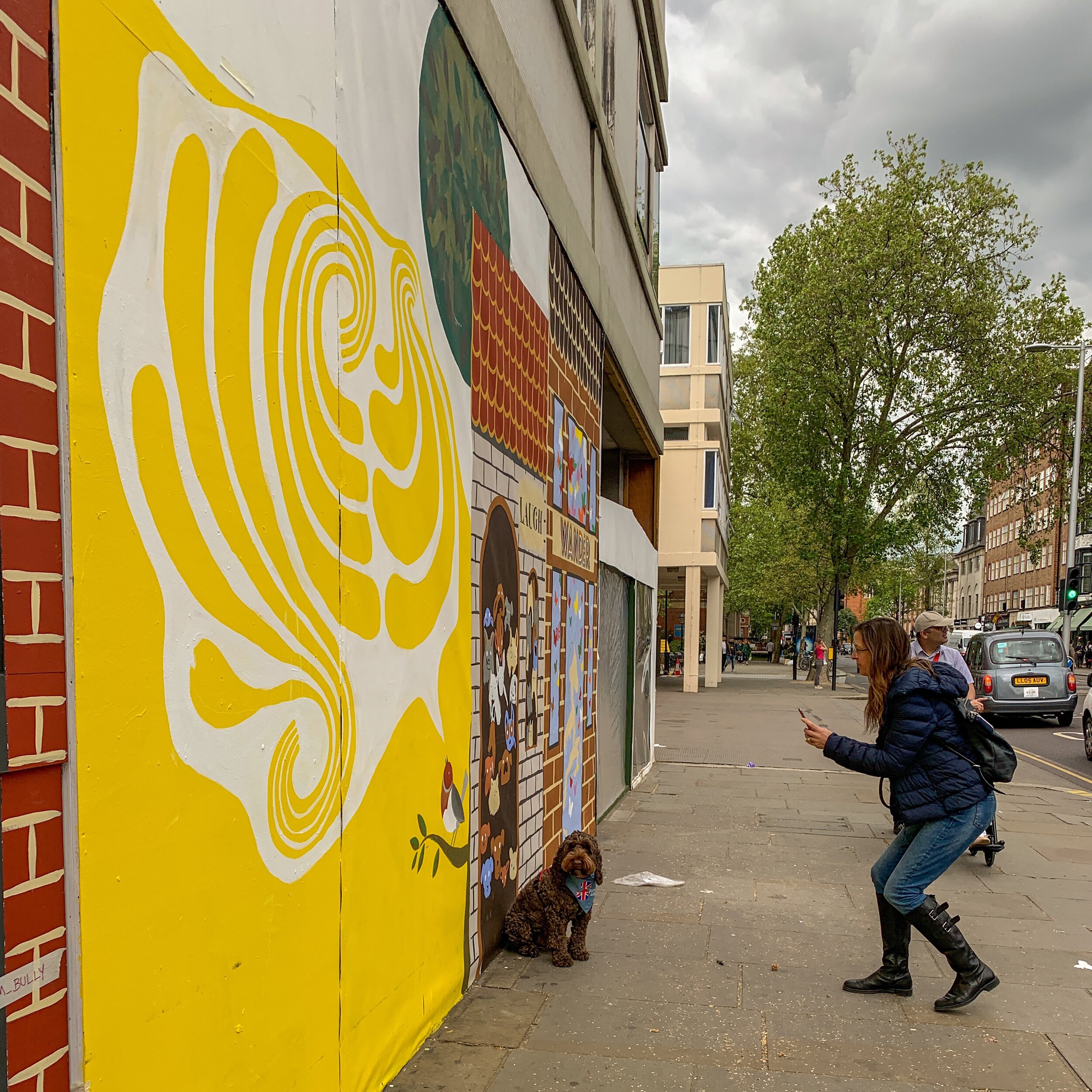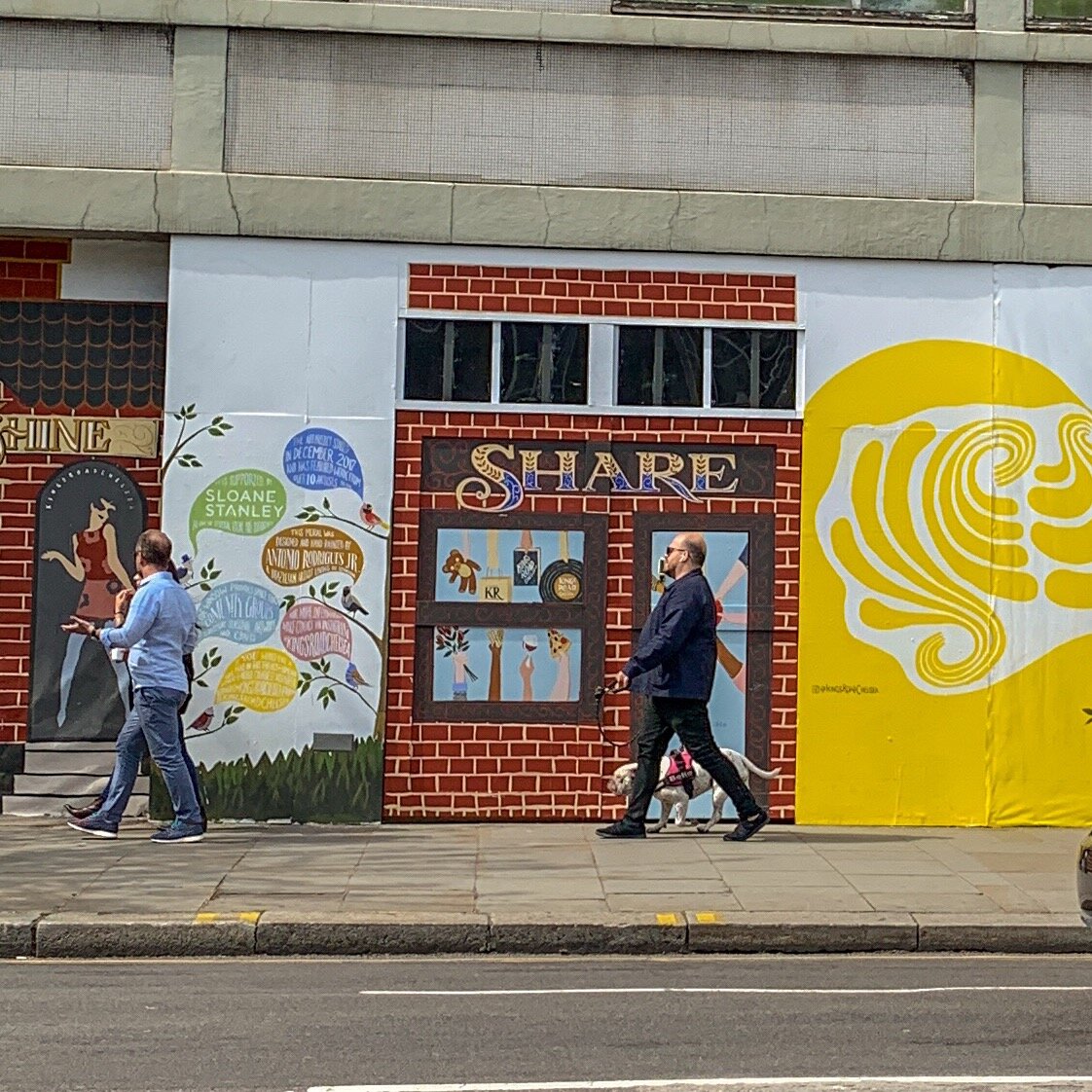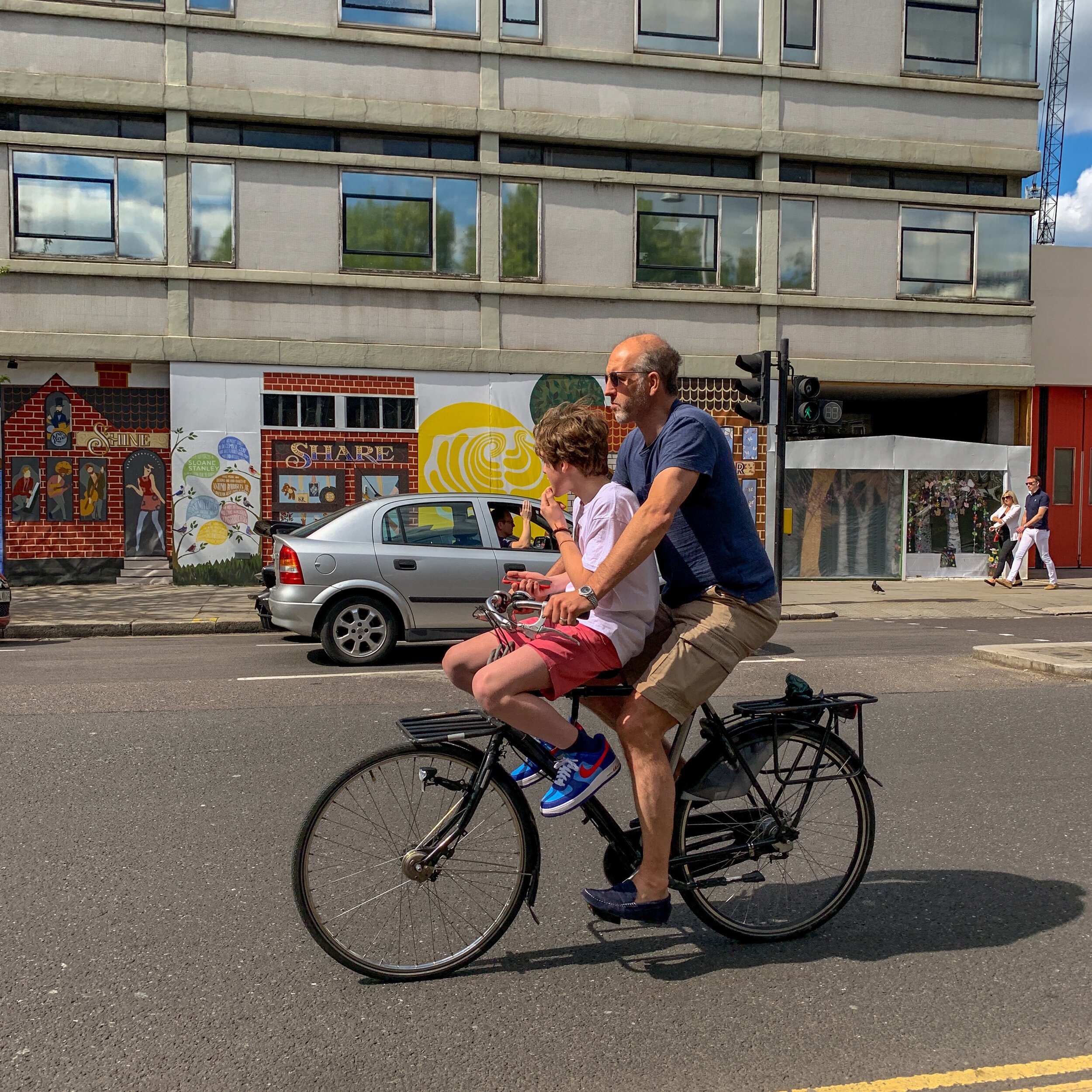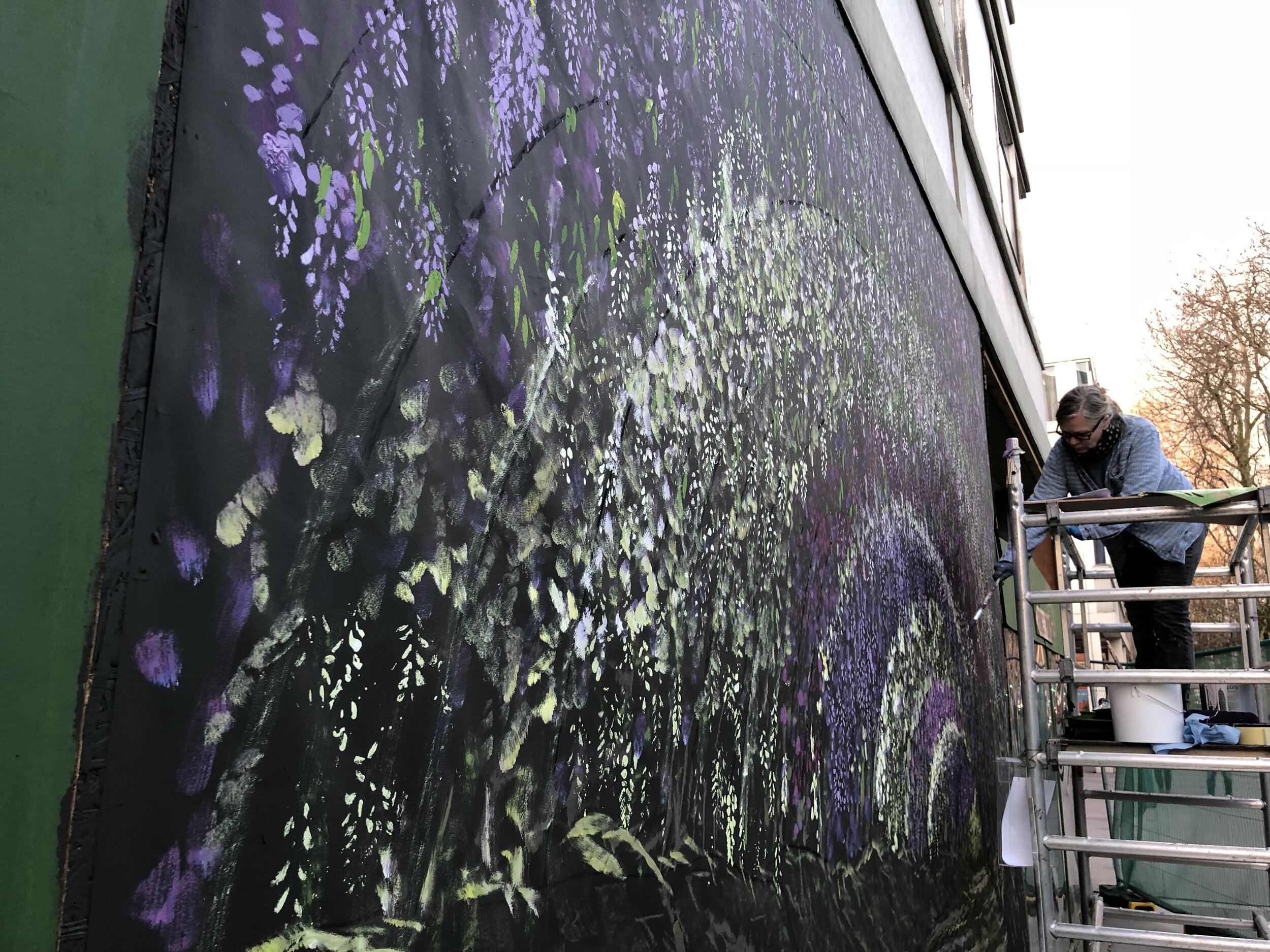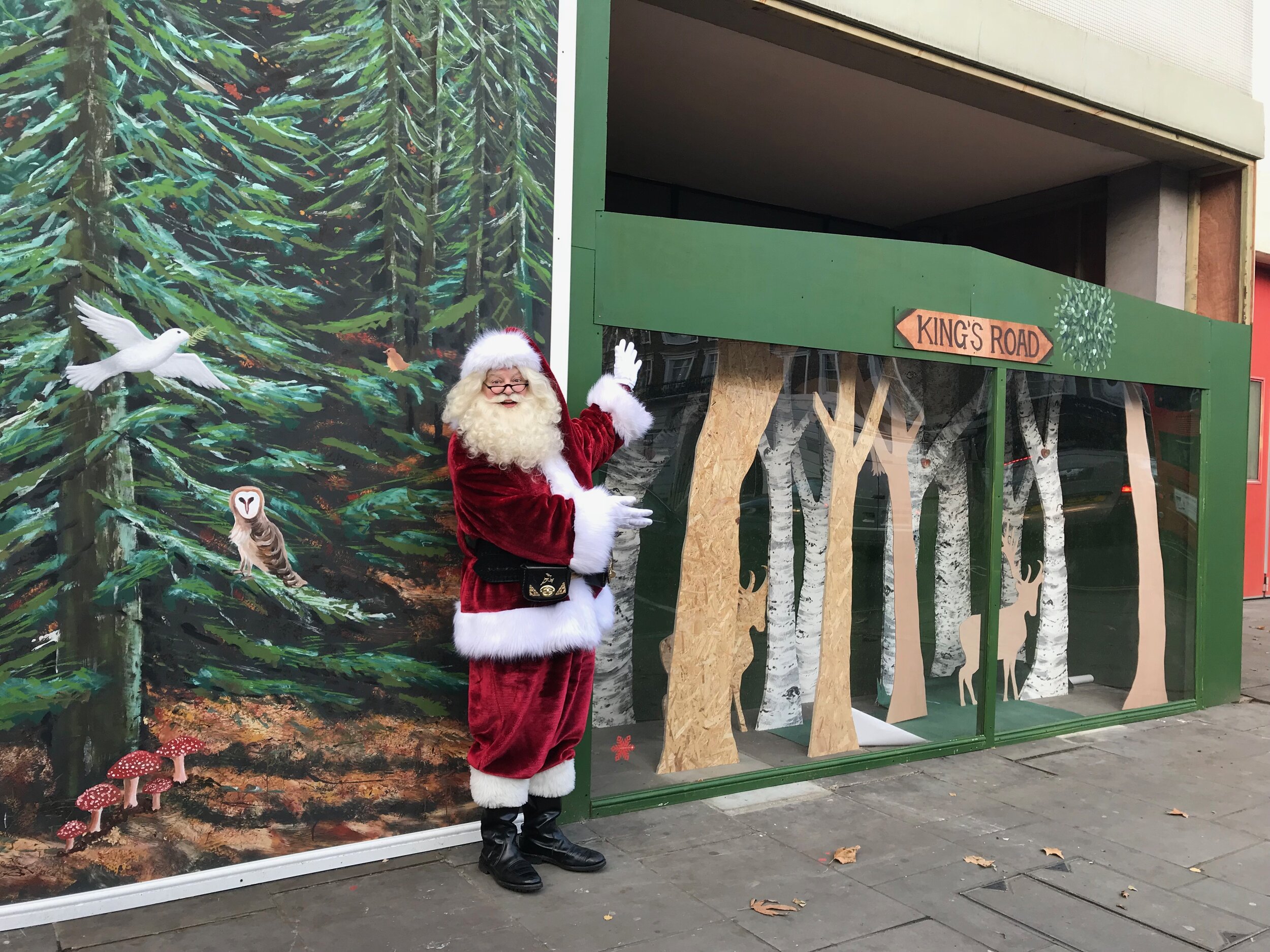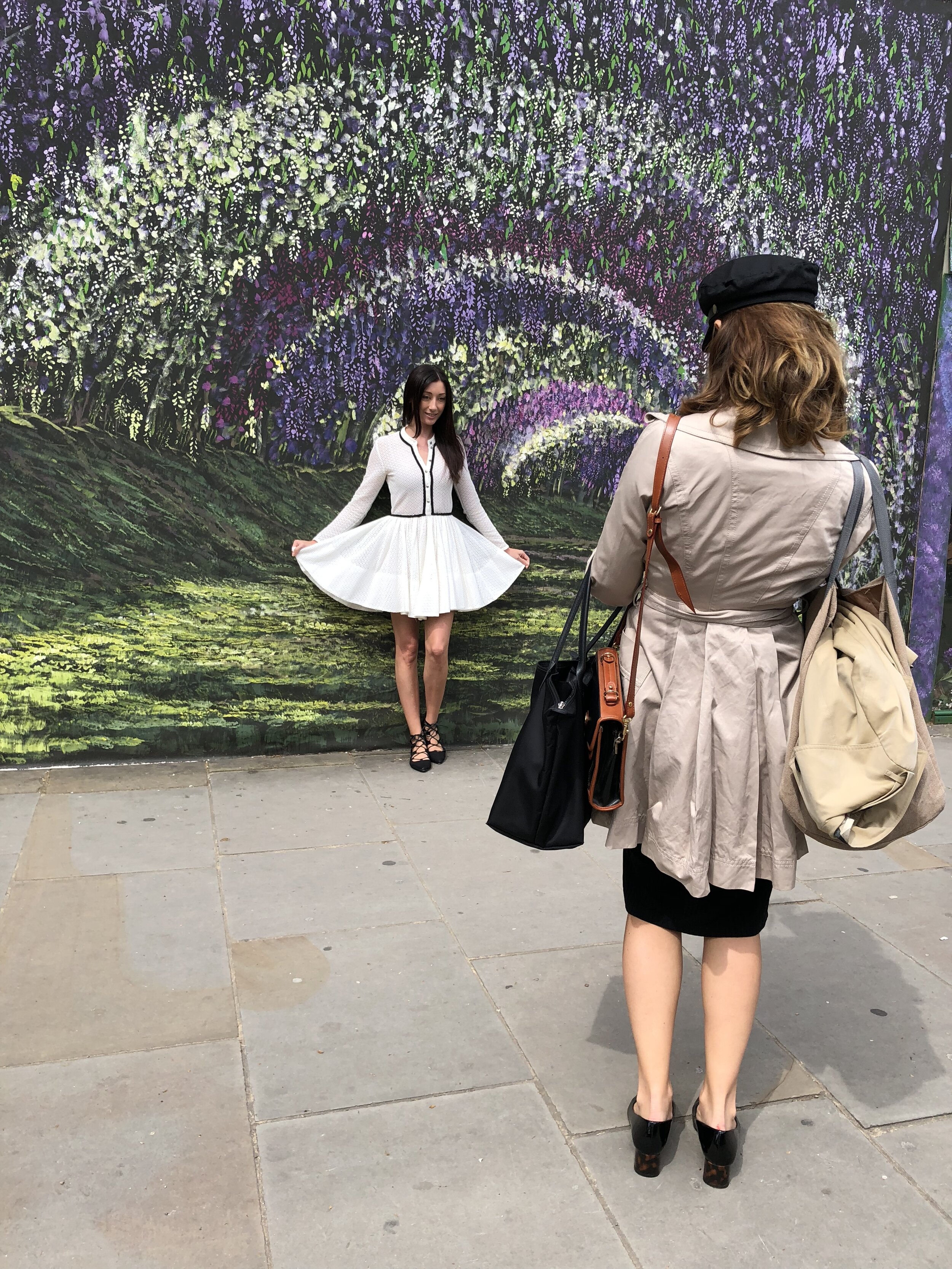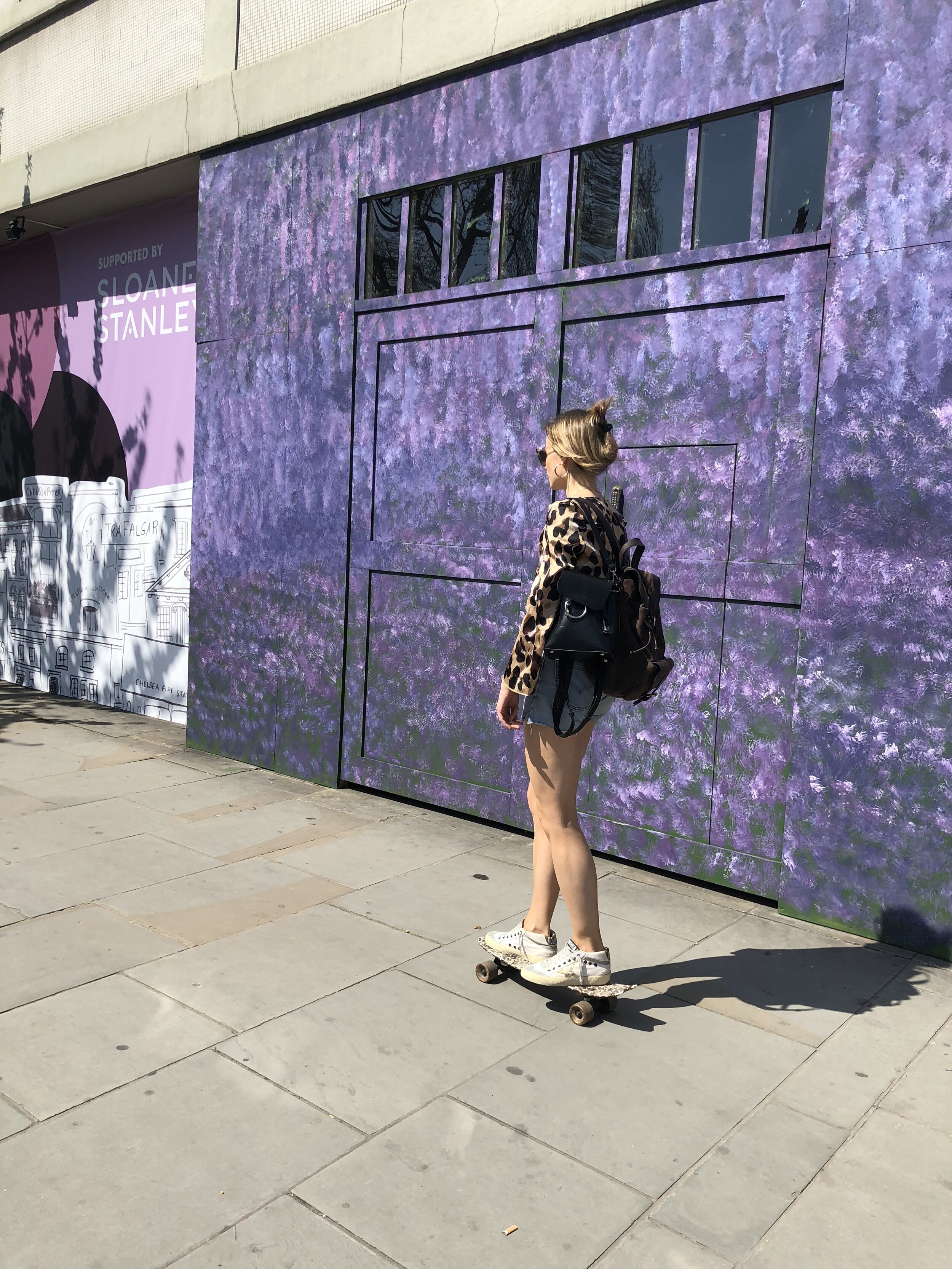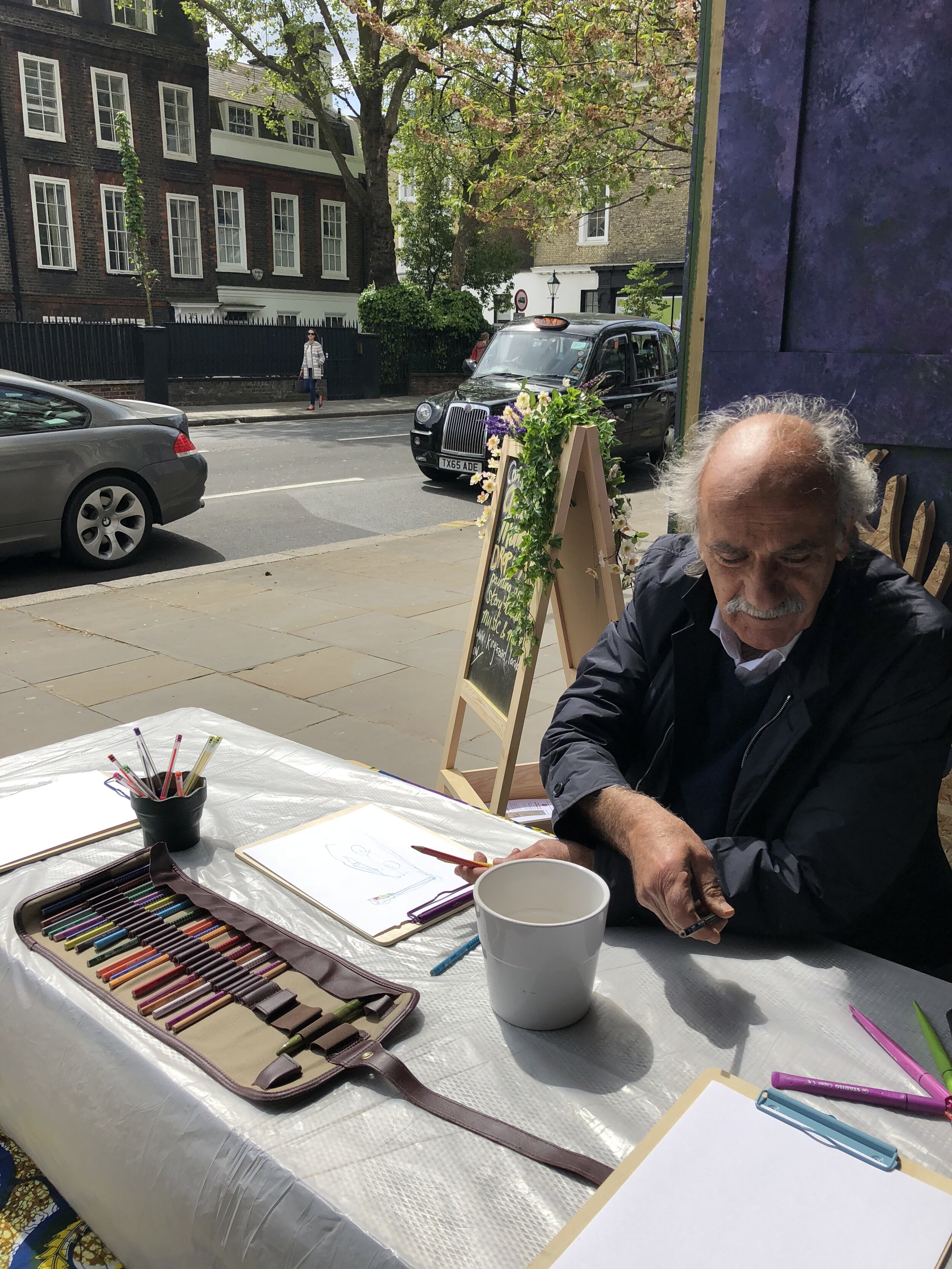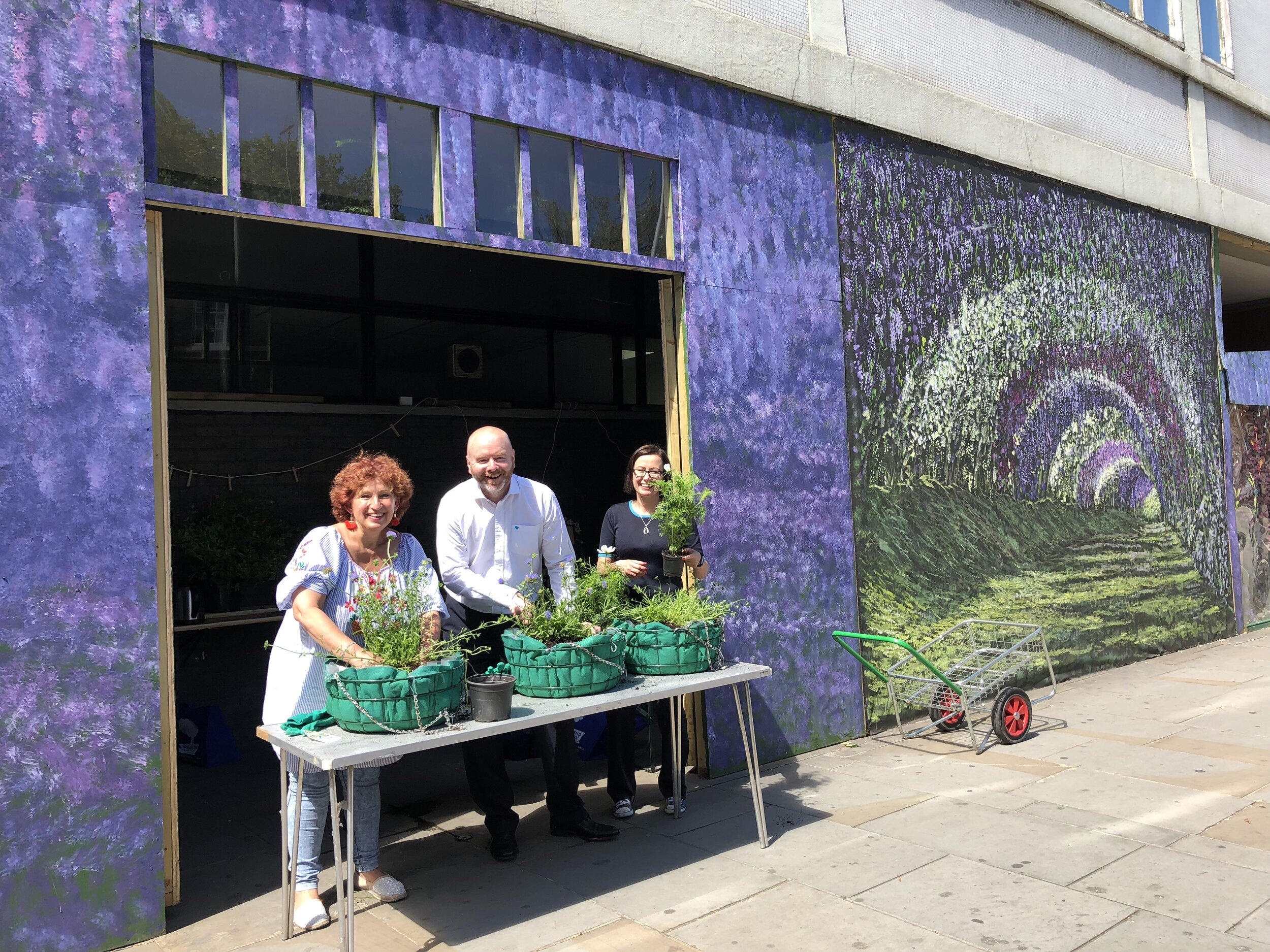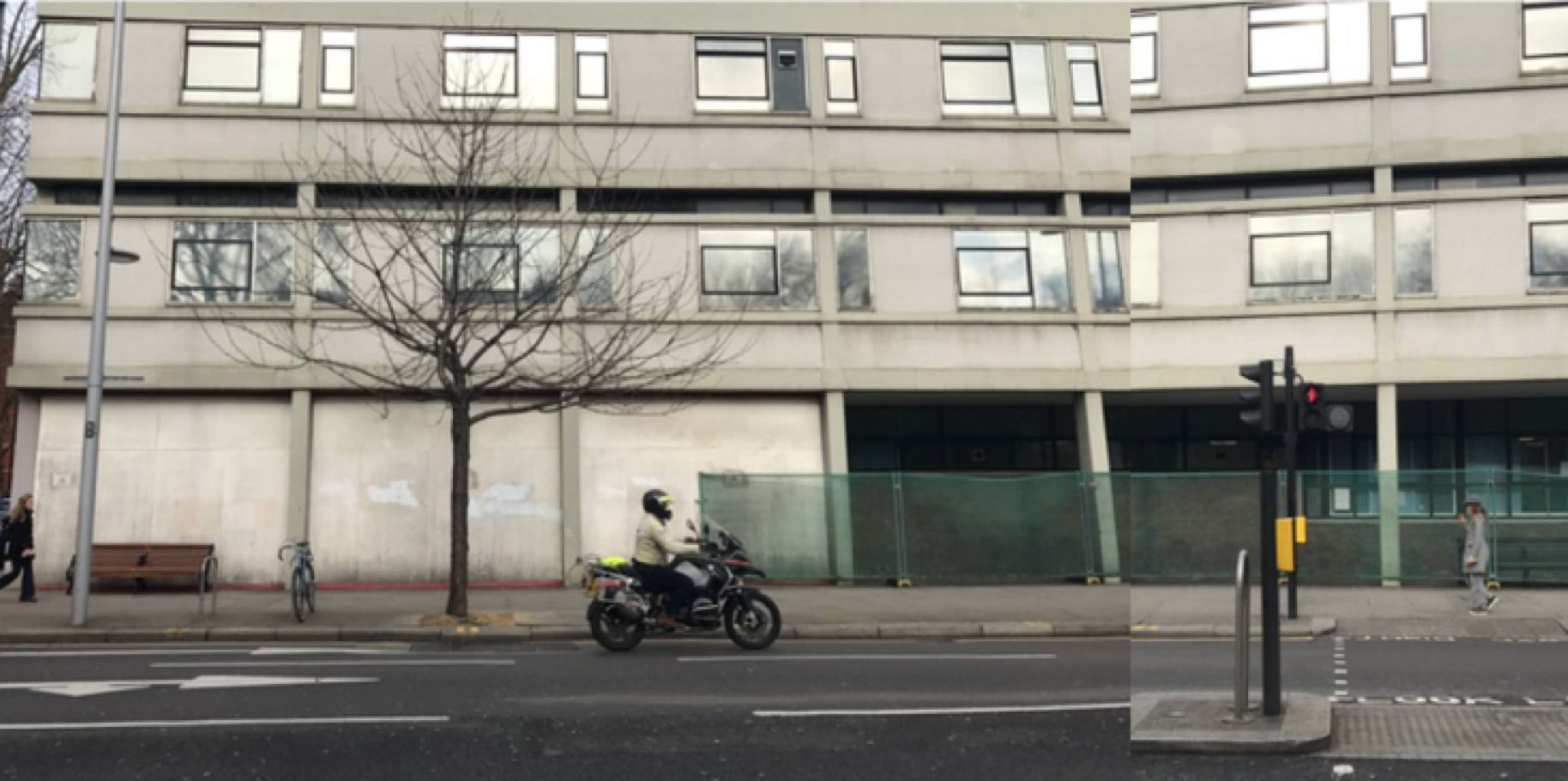Mural by Chelsea Fire Station
Colourful Street
Instagram @loisohara
We celebrate “Colourful Street” with the vibrant and effervescent artist, Lois O’Hara. Her work is becoming more and more recognisable in public places as it shimmers with life and excitement. In these uncertain times her work is the perfect pick-me-up and makes you want to skip when you see the flowing lines.
We are particularly excited to collaborate with Lois as she has used King’s Road, Chelsea as her muse and worked with us to match colours to real life photographs and the flowing lines to real life movement on the road.
We are also delighted to be working with the global team at Pantone and The Pantone Color Institute to work on understanding colour even more. And as if this isn’t already enough, we have uncovered a real hero from the 1700s to learn from. His name was Jacob Christoph Le Blon and he discovered what we know today to be the CMYK spectrum. All colours today have a CMYK mix and he came up with this understanding hundreds and hundreds of years ago IN CHELSEA. Isn’t life delicious?
The third event takes place 1 - 11th October across Kensington & Chelsea. The event celebrates the rich artistic and cultural heritage, past and present of this area and we are delighted to collaborate within their exceptional programme of events.
Colourful Street / Colourful Life
The King’s Road, Chelsea has been synonymous with some of the world’s best known characters over the centuries and there’s a reason we call characters colourful when they stand out in our memories. This is because they colour our imaginations and create stories and ideas and fire the synapses in so many new and puzzling ways. Below are just a few of the best known, most influential and some notorious coves that have walked this road, with pride, with happiness and sometimes with shame.
Image by Zach Hyland @zqfilm
Murano glass shapes by Mo Morsal
Jacob Christoph Le Blon and Chelsea Park
Coloritto
Jacob Christoph (or James Christopher, or Jakob Christoffel) Le Blon was born in 1667 into a family of artists, printers, and bookmen. His father, Christoph Le Blon, was an engraver and bookseller in Frankfurt am Main. Le Blon's mother, a daughter of the painter Matthäus Merian, was a half-sister of the artist and entomologist Maria Sibylle Merian. Le Blon trained as a painter and mezzotintengraver under Carlo Maratti in Rome. Peripatetic throughout his life, at the end of the seventeenth century Le Blon was living in Amsterdam, where he supported himself as an artist, primarily a miniature painter. At this time, according to Richard Godfrey, Le Blon began to experiment with colour-printed pictures. His system used three different plates, each inked with a different colour and applied in sequence to a single sheet of paper. Le Blon's studies continued even after a move to London, about 1715. In 1719, George I granted him a patent for a technique to print pictures in colour and, with a business partner and students, Le Blon set out to exploit his invention. The Picture Office, as the company was called, offered the public copies of pictures of famous people and portraits by famous painters. Yet despite the appeal of bringing home the notorious or revered, Le Blon's colour-printed pictures never attracted clientele in the numbers he and his supporters expected, and The Picture Office failed before the patent expired.
Le Blon's technique of colour printing, as described in his book Coloritto, was the outcome of a search for the mechanical practice of painting. The invention demonstrated that there was an inherent order to art, as there was in nature, and that furthermore the two were closely connected. Proof of the validity of these precepts came through the concept of trichromacy. Artists knew that combinations of red, yellow, and blue plus black and white would make all other colours. In Le Blon's system, white was supplied by the paper and, as trichromatic theories indicated, overlayering of all three inks would create black. As part of the search for a greater order, determination of the proper materials for these three colours was essential. They must be able to combine to create shades in proportion to the quantity of colouring particles used.
Jacob Christoph Le Blon's inventions raise many questions about production and intentions. They were not financial successes in his time, and they are obscure now. Nevertheless, Le Blon's inventions are examples of the range of sources, practical as well as philosophical or scientific, that were called into the effort to improve colour-related manufactures. Le Blon's work was a model of trust in connections between philosophical knowledge and industry practices, his endeavours are significant for the assumptions they express about the use of science in the industrialisation of artisan practices. Extant examples of Le Blon's work, together with his writing about that work, show that he was inspired by scientific ideas to develop concepts that were in turn connected to other artist practices. Creating this connection was a production goal and a selling point for scientists, artisans, and consumers. To find out more about Le Blon’s studies and explorations click here.
Colourful Characters
This part of town has always been synonymous with surprising characters. Here we recognise merely a few and wonder...’what makes someone colourful?’ How do you find your own unique colour?
Oscar Wilde
Oscar Wilde was an Irish poet and playwright who lived from 1854 - 1900. He is infamous for his pithy quotes about people of his time and his acid wit. He was undone by the conventions of the day and convicted for homosexual acts which overshadowed much of his fame and destroyed his fortune. He is much loved and lived in Tite Street, Chelsea.
Vivienne Westwood
Another colourful character often seen in Chelsea cycling across Albert Bridge. She was at the epicentre of the punk movement and created mayhem with her husband Malcolm McLaren. They flouted the norms of their day and were blatant in their approach to subjects that were unspoken at the time. Anarchic in their attitudes and their activities they opened SEX on King’s Road, Chelsea. Dame Vivienne Westwood (kinda funny really) is still active in the fashion world and shining brightly in environmental activism. Her shop on King’s Road has a clock with time going backwards and is a magnet for fashion enthusiasts from around the world. Her son recently burnt millions of pounds of punk memorabilia on his boat on Chelsea Embankment.
Regular People
Every day people walk King’s Road with a definite swagger. It’s full of people enjoying a stroll and taking in the atmosphere. It’s hard to say what defines the King’s Road because in so many ways it’s nondescript. It’s very ordinary when you stop to look. It’s not a beautiful road by any stretch of the imagination. There’s not really a focal point and its shops change with the times. But something is in the very fabric of the place and people feel at home. They can be invisible or stand on parade and the road just takes it all in its stride. Pause for a moment to consider you are walking in the footsteps of some of the world’s most well known people. Then go on with your day.
Collaborators & Supporters
The Palette explored with The Pantone Color Institute
Lois chose her palette by looking through a range of images of King’s Road photographs and matching to the Pantone colours so we could look at what the hidden meanings were for each of the colours chosen. The Pantone Color Institute gave us an insight to their immense knowledge base on the moods and psychological impact of these colours on our inner and outer lives. Click on each colour to learn its hidden meanings…
The Influence of Colour
In our highly visible world, the language of colour is your most powerful communication tool, one that can be used to direct attention, guide perceptions and influence our physiological and psychological responses. Every colour conveys its own unique message and meaning. By thoughtfully leveraging the power of colour we can clearly broadcast our identity, uniquely express who we are as individuals, inspire specific actions or create that exact right feeling or mood.
Yellow
Blue
What mood does this colour evoke?
An energising golden yellow whose friendly message of warmth and sunshine stimulates the imagination to new heights.
Tell us more about this moody hue?
A brisk and buoyant blue hue whose vibrancy uplifts and inspires.
Pink
Orange
Green
How does this colour affect your day?
Those who display an optimistic outlook are said to look at the world through “rose-tinted glasses”, while people whose face has a rosy glow, are often thought to look healthier.
What do you feel when you see this?
Good natured and expansive, a welcoming orange shade that encourages sociable activity and spontaneous adventure.
How do you experience this shade?
A gently optimistic green with a soothing presence that refreshes and restores.
Colours matched from images of Chelsea and King’s Road
Flows and shapes matched to street movement
Chelsea Park
Chelsea Park
In the 1700s there was a large private estate between King’s Road, Fulham Road, Old Church Street and Park Walk which was originally Lord Wharton’s Estate and which then became Chelsea Park. At this time, in 1717, the ancestors of
Sloane Stanley purchased the Estate and the family continues to own the same area today. Over the centuries the space has unsurprisingly changed from its original open air appeal; however there are many remaining aspects that can offer a fascinating look back in time. We have designed a walk to chart the area and to highlight some of the main points of interest.
Christoph Le Blon lived in this part of Chelsea when he worked on his theory of painting and colour and when he published his book, Coloritto.
CHELSEA PARK an excerpt from British History Online.
In the 1680s the 40-acre Chelsea Park was made up of pieces of pasture or arable enclosed overall with a brick wall and leased to John Thorley, victualler. By 1724 land had been taken along the western boundary of the park to create a road between
King's Road and Little Chelsea at Fulham Road, lined with elms and called Twopenny Walk; it was later renamed Park Walk. The park was still apparently without buildings in 1717, but the following year it was leased to patentees for silk production who intended growing mulberry trees there. A large house had been built 'for nursing silkworms' by 1724 when it was leased to Sir Richard Manningham, MD, famous man-midwife, who was permitted build as he thought fit and take gravel, but had to replace any elms he took down in Twopenny Walk. His lease was subject to the lease of the silk producers' house and ground during the term of their patent, but if their lease was not renewed, Manningham was permitted to sell the mulberry trees growing there. The proprietary Park Chapel, halfway along Park Walk, was said to have been built by Manningham in 1718, which if true would indicate that he had acquired some interest from the silk undertakers that year. Although he died and was buried in Chelsea, he apparently never had a house there. He did however lease land to Jacob Christoph Le Blon who undertook many endeavours in weaving and in colour theory.
Join us on a self-directed walk around Chelsea Park. The walk will take around 1 hour and is around 1 mile long. The walk is on Google Maps here.
Chelsea Park
On 20th May 1717 the elder William Sloane of Grange Court in the parish of St Clement Danes purchased the Marquis of Wharton’s Chelsea Estate for £4000. In the 1680s the 40-acre Chelsea Park was made up of pieces of pasture or arable enclosed overall with a brick wall and leased to John Thorley, victualler. During the eighteenth century, areas of Chelsea Park were leased to various entrepreneurs for the purposes of a number of different business ventures. These ventures included an attempt at silk farming during the 1720s, a bold but short-lived scheme that saw the planting of over 2000 mulberry trees in the park, as well the establishment during the 1730s of another enterprise, the tapestry workshops of Jacob Christopher Le Blon who invented the CMYK colour spectrum still used today (the productions of which are today displayed in the V&A). For a long time, however, most of the park’s lands continued to be used for pasture, farming and market gardening.
A - Lover’s Walk
Amongst the first batch of leases granted by the elder William Sloane was one for the building of a schoolhouse, enclosed by a brick wall and another for a place of worship. Both would stand on Twopenny Walk, later Park Walk.
B - Park Chapel
St Andrews Parish Church in Park Walk marks the site where Park Chapel used to stand. The Chapel was provided by Sir Richard Manningham in 1718 as a place of worship in addition to what is now Chelsea Old Church in the original village,
The chapel was called Park Chapel.
The park was still apparently without buildings in 1717, but the following year it was leased to patentees for silk production who intended growing mulberry trees there. A large house had been built 'for nursing silkworms' by 1724 when it was leased to Sir Richard Manningham, MD, famous man-midwife, who was permitted build as he thought fit and take gravel, but had to replace any elms he took down in Twopenny Walk. His lease was subject to the lease of the silk producers' house and ground during the term of their patent, but if their lease was not renewed, Manningham was permitted to sell the mulberry trees growing there. The proprietary Park Chapel, halfway along Park Walk, was said to have been built by Manningham in 1718, which if true would indicate that he had acquired some interest from the silk undertakers that year. Although he died and was buried in Chelsea, he apparently never had a house there.
C - Aston Martin
In 1847 Mrs Henniker-Wilson was living in the mansion known as Chelsea Park – now Henniker Mews - where Lionel Martin and Robert Bamford in late 1912 took over the site to build what is today Aston Martin. On the 15th January 1913, their partnership became incorporated as ‘Bamford and Martin Ltd’ and construction began on their first unique automobile. This car, known as ‘Coal Scuttle’ – the first ever Aston-Martin (note the hyphen) was registered for the road in early 1915. Not long after the First World War had begun, the small factory closed and both the bosses and workers joined in with the War effort.
D - Thistle Grove
This is shown in the maps dating back to mid 1800s and is opposite where the entrance to Chelsea Park is thought to have been.
E - The Queen’s Elm
The Queen’s Elm under which Queen Elizabeth I is said to have sheltered from the rain with Lord Burghley. Whatever the truth of the story, ‘the Queen’s tree’ was recorded in the Parish Books as early as 1586 when an arbor was planted around it, possibly the Nine Elms given as an address in Chelsea as late as 1805.
Queen's Elm Square was built in 1904-6 for the Sloane Stanley Estate on a site behind the Queen's Elm public house. The houses overlook communal gardens with an access road at the front, behind which the two-and-a-half storey neo-Tudor half-timbered buildings have remained virtually unchanged since they were built.
F - Chelsea Arts Club
No 143 is the home of Chelsea Arts Club which is a focus for the arts and opened in 1881. The Chelsea Arts Club was founded in 1891 by a group of artists living and working in the area. For the first ten years of its existence the Club occupied premises in a studio at 181 King’s Road. In 1901 the Members purchased a house just round the corner, at 143-5 Old Church Street; the Club has been there ever since.
G - The Vale
South of Chelsea Park there existed a cul-de-sac known as The Vale, communicating with King’s Road. It contained four houses, all of which are shown on Thompson’s map of 1836. According to the Survey of London in 1913 “with their trees and charming gardens they served to remind the visitor of a Chelsea that is now almost gone”. BE Martin in 1889 wrote “turning down a rural lane we stroll into The Vale and find a clump of cottages, covered with vines grown about with greenery, flowers blow, cocks crow, an air of country unconcern covers the enclosure”. Whistler noted that ‘the Vale was then really a Vale”. At no. 1 The Vale lived William de Morgan, the novelist and potter, and his wife Evelyn, a painter in the pre-Raphaelite tradition. Whistler lived at no 2 from 1886 – 1890 and when he left it became the home of two artists, Charles Ricketts and Charles Shannon, whom Oscar Wilde frequently visited.
H - Mulberry Walk
This area was purchased to form a mulberry garden by a company with a patent for the manufacturer of raw silk. The climatic conditions and soil were apparently suitable for the planting of mulberry trees.
In 1718 a 60-year lease was granted for the whole of Chelsea Park to the Raw Silk Undertaking who had grand plans to grow mulberry trees and make their fortunes producing silk cloth for the home market. Mulberry Walk is so named after the planting of mulberry trees for the production of silk.
Another inventor Jacob Christoph le Blon set up a factory in the area for the purpose of weaving tapestries based on seven Raphael cartoons. These cartoons, which remain in Royal ownership were put on display at the Victoria & Albert Museum and are still some of the greatest treasures on view today. Mr le Blon was highly industrious as he published a book, Coloritto, in 1723 in London which introduced the CMYK spectrum for measuring and blending paint colours. This system still in use today.
I - Mallord Street
The road was originally built between 1910 and 1925. Mallord Street earned its name from the painter JMW Turner. The development of this area has been described as ‘intended for occupation by artists, architects, musicians, writers and professional people of modest means.’ Many large studios were incorporated and design ingenuity was frequently directed at concealing their existence from the streets. 5 Mulberry Walk, home of Arild Rosenkrantz, the stained glass artist, is a good example. Occasionally artists drew up the specification for their own houses, as did Arthur C Mitchell for his house ‘Vale End’ at 32 Mallord Street, designed for him by Charles RG Hall FRIBA in 1913. The area was awash with creatives wandering the streets brooding upon their work or exchanging ideas.
J - Blue Bird Garage
The garage was built in 1923 for the Bluebird Motor Company, designed to the very latest style by the architect Robert Sharp. At the time of its completion the garages were claimed to be the largest in Europe. At 50,000 sq ft (4,600 m2), there was room for 300 cars in the main garage, a further 7,000 sq ft (650 m2) was given over to workshops. On either side of the garage two further buildings contained lounges and writing rooms. The lounges were segregated for ladies, owners and chauffeurs.
The land speed record breaker Malcolm Campbell was connected with the Bluebird garage, initially holding the franchise for Itala and Ballot cars. He raced both of these marques, using this hobby as a form of advertising. In 1925 he also became the agent for the newly-founded Chrysler company. As a racing driver he was less than impressed with Chrysler and imposed upon his long-suffering mechanic Leo Villa to wring just enough speed out of it to put up an impressive show at Brooklands. One of Campbell's maxims was, "Never trade with your own money. Always use that of others", which he demonstrated when the Bluebird garage folded in 1927. The shareholders, of whom (Campbell wasn't one) lost their whole investment. His own racing garage at Brooklands, the 'Campbell Shed' paid for from his own pocket, was more successful.
In later years the building was used as an ambulance station. In 1997 the building was converted by Sir Terence Conran's Conran Group into the 'Bluebird Gastrodrome', including a Restaurant, Bar, cafe and private dining rooms. The garage area was occupied by the Sainsbury's supermarket chain as an experimental 'concept' shop. Sainsbury's withdrew from the space which made way for 'the shop at bluebird', a high end clothes, furniture and book shop and today it is home to the furniture and interior designer Timothy Oulton.
Sources
British History online
Sloane Stanley Estate
London Gardens Trust
Aston Martin Owners Club
Royal Borough Kensington & Chelsea
National Transport Trust
Chelsea Arts Club
Past Murals since Christmas 2017
Past artists include award winning Marguerite Horner, Antonio Rodrigues Jnr and Sol Sato. The space has been used for community activities such as plant giveaways and charity donations as well as drop in art workshops with Dove Art Studios.
























